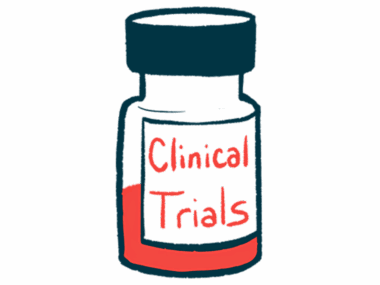Vyvgart found effective for 3 triple-seronegative gMG patients
Women with hard-to-treat symptoms saw easing, case series reports
Written by |

Treatment with Vyvgart (efgartigimod) eased hard-to-treat symptoms for a trio of women with generalized myasthenia gravis (gMG) who tested negative for three antibodies commonly seen in the disease, according to a case series from China.
Per the researchers, “this report describes three patients with triple-[seronegative] gMG successfully treated with efgartigimod,” approved as Vyvgart in the U.S., Europe, and Japan for certain adults with gMG.
In the U.S. specifically, Vyvgart is approved as an infusion therapy for adults with gMG who are positive for antibodies targeting the acetylcholine receptor (AChR) — the most common type of MG-causing antibody. A form given via injection under the skin, or subcutaneously, is also approved under the brand name Vyvgart Hytrulo.
For one of the women, all gMG symptoms resolved within one month of starting Vyvgart, according to the report.
The case series, titled “Efgartigimod Is an Effective Treatment for Triple-Seronegative Generalized Myasthenia Gravis: A Report of Three Patients,” was published in the journal Muscle and Nerve.
Myasthenia gravis (MG) is caused by the production of self-reactive antibodies that target molecules involved in nerve-muscle communication, leading to progressive muscle weakness and fatigue. Most commonly, the condition is caused by autoantibodies directed against AChRs.
Ongoing clinical trial testing Vyvgart in patients without AChR antibodies
About 5% to 7% of people with MG are triple-seronegative, which means they do not test positive for autoantibodies targeting AChR or other important proteins at the neuromuscular junction. Specifically, these are muscle-specific kinase, or MuSK, and low-density lipoprotein receptor-related protein 4, known as LRP-4.
“This group poses diagnostic and therapeutic challenges due to limited understanding of their disease mechanisms,” the researchers noted.
The autoantibodies driving MG belong to the IgG class. Vyvgart targets neonatal Fc receptor (FcRn), a protein that supports IgG survival. It is intended to increase the rate at which IgG antibodies are broken down and ease MG symptoms.
An ongoing Phase 3 clinical trial (NCT06298552), called ADAPT SERON, is testing Vyvgart in people without AChR antibodies, including those who are triple-seronegative. That study involves 91 locations in multiple countries.
All 3 patients had received previous MG treatments
In this case series, researchers from The First Affiliated Hospital of China Medical University in Shenyang discussed three triple-seronegative women with gMG — meaning they had a more severe form of the disease, with weakness in varying muscle groups throughout the body — who benefitted from Vyvgart therapy.
“These patient reports provide preliminary evidence supporting the effectiveness of [Vyvgart] as a potential alternative treatment for patients with triple-[seronegative] gMG who do not respond adequately to traditional therapies,” the research team wrote.
The first case involved a woman diagnosed with MG when she was 4 years old. By age 41, she had received multiple types of treatments, including pyridostigmine and immunosuppressive therapies, but still was experiencing droopy eyelids, double vision, neck weakness, and inability to brush her teeth or walk. Blood tests for AChR, MuSK, and LRP-4 were negative.
Vyvgart was then started, at a dose of 10 mg/kg of body weight. The woman’s symptoms eased on the second day of treatment. By week five, she could lift her head for 70 seconds and no longer had droopy eyelids and double vision. After the second cycle of treatment, she was experiencing significantly less weakness in her lower limbs.
These patient reports provide preliminary evidence supporting the effectiveness of [Vyvgart] as a potential alternative treatment for patients with triple-[seronegative] gMG who do not respond adequately to traditional therapies.
In the second case, a 70-year-old woman, whose MG symptoms had started 15 years earlier, was experiencing similar ocular symptoms and limb weakness, as well as difficulty speaking and swallowing. Her condition had improved after therapy with neostigmine, a compound that enhances muscle strength, and pyridostigmine. Intravenous immunoglobulin and the immunosuppressant tacrolimus were not effective, and after six months, her symptoms worsened.
As in the first case, the second woman started on Vyvgart.
“By week 4 of treatment, her symptoms significantly improved, with complete recovery from [double vision] and upper limb weakness,” the team noted. Four weeks later, droopy eyelid and trouble swallowing with prolonged muscle use worsened again, but a second cycle of treatment was started and led to rapid improvement.
Woman, 72, sees all symptoms resolve with Vygart
Finally, the third case described a 72-year-old woman with difficulty swallowing and speaking, who required a feeding tube. Blood tests showed she was triple-seronegative. Because of her clinical symptoms and repetitive nerve stimulation results, she was diagnosed with gMG, and began Vyvgart therapy.
“By week 4, all symptoms resolved,” according to the team, and she no longer needed the feeding tube.
“A favorable clinical response to FcRn inhibition suggests the probable presence of pathogenic [disease-driving] autoantibodies in triple-[seronegative] gMG,” the team wrote, adding that “retreatment cycles with [Vyvgart] are individualized and determined by clinical evaluation.”
The team noted that the placebo-controlled clinical trial is underway.








Leave a comment
Fill in the required fields to post. Your email address will not be published.